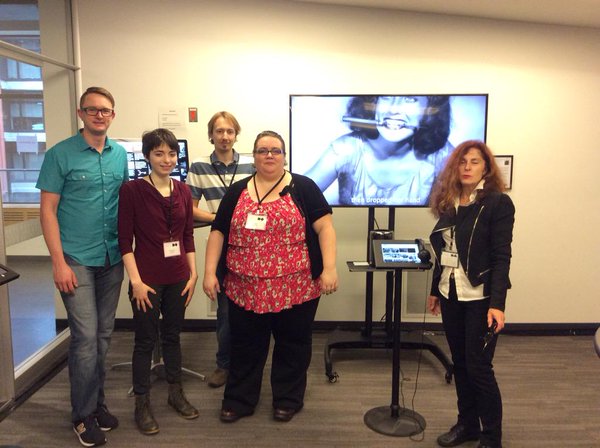The New Text exhibition featured at the International Symposium on Electronic Art (ISEA) in Vancouver, British Columbia, attracted artists far and wide. With submissions from Canada, Australia, and even Sweden, this group of renowned creatives represents a diverse amalgamation of geographies and cities – something that, veteran curator, Hans Ulrich Obrist deems as “necessary” and beneficial for the curatorial process (90). Not only this, but the New Text exhibition paralleled a number of other ideas and practices championed and encouraged by Obrist, in the end reflecting the contemporaneity as well as the ultimate success of the New Text exhibition.
At first glance, these pieces of literary art chosen for the New Text exhibition all grew out of instructions, and as such, many of these works – especially those derived from computer code – reflect the idea that “the instruction, not the object, is the work” (Obrist, 49). In fact, some of these works also represent a shift in artistic practice – the rise of performative works. As Obrist remarks, “art continues to be, for the large part, a story of objects” (49). However, with algorithmic pieces like Johannes Helden and Hakon Johnson’s Encyclopedia and Jody Zellen’s Spine Sonnet – that procedurally change over time – we see an ephemerality almost exactly like words, dance, and/or music. Both of these examples randomly generate new patterns and words upon interaction, revealing an infinite number of possibilities (which are very similar to the dynamic conversations prescribed by Obrist).

The New Text Exhibition Team
On another note, as a docent for the New Text exhibition, I watched as many guests traveled in and out, making sure to be as helpful as possible, without being too controlling. It was essential to let these individuals dictate their experience, allowing them full freedom within the space. Obrist knows this all too well, advocating for “a nonlinear experience” since works “don’t reveal themselves instantly” (92). This ability to return should not be compromised; it should be encouraged and facilitated through helpful dialogue and meaningful conversation.
“It was more important how many hours the visitors spent in the show. It’s better to have a few thousand spend an entire day with the show rather than 300,000 run through it” (Obrist, 48).
In all, the New Text exhibition is very akin to the exhibits described as well as the practices advocated by curator Obrist. It is clear that future exhibitions should take these ideas into account – especially those regarding nonlinearity and diversity – while also innovating in other areas.
April 4, 2016 at 2:02 am
As you had firsthand experience in the New Text exhibit, I am pleased to see that you described the experience of the exhibit and specifically how you made sure to let visitors have some space to make their own experience at their own pace. Obviously, as we read from Obrist’s book, it’s important to allow visitors this opportunity in order to have a unique experience by connecting to the work in their own way, without outside intrusion. As well, many of the works seem to require this undisturbed viewing as, like Spine Sonnet or Whispering Galleries, they generate unique pieces or take time to view in order to make connections.